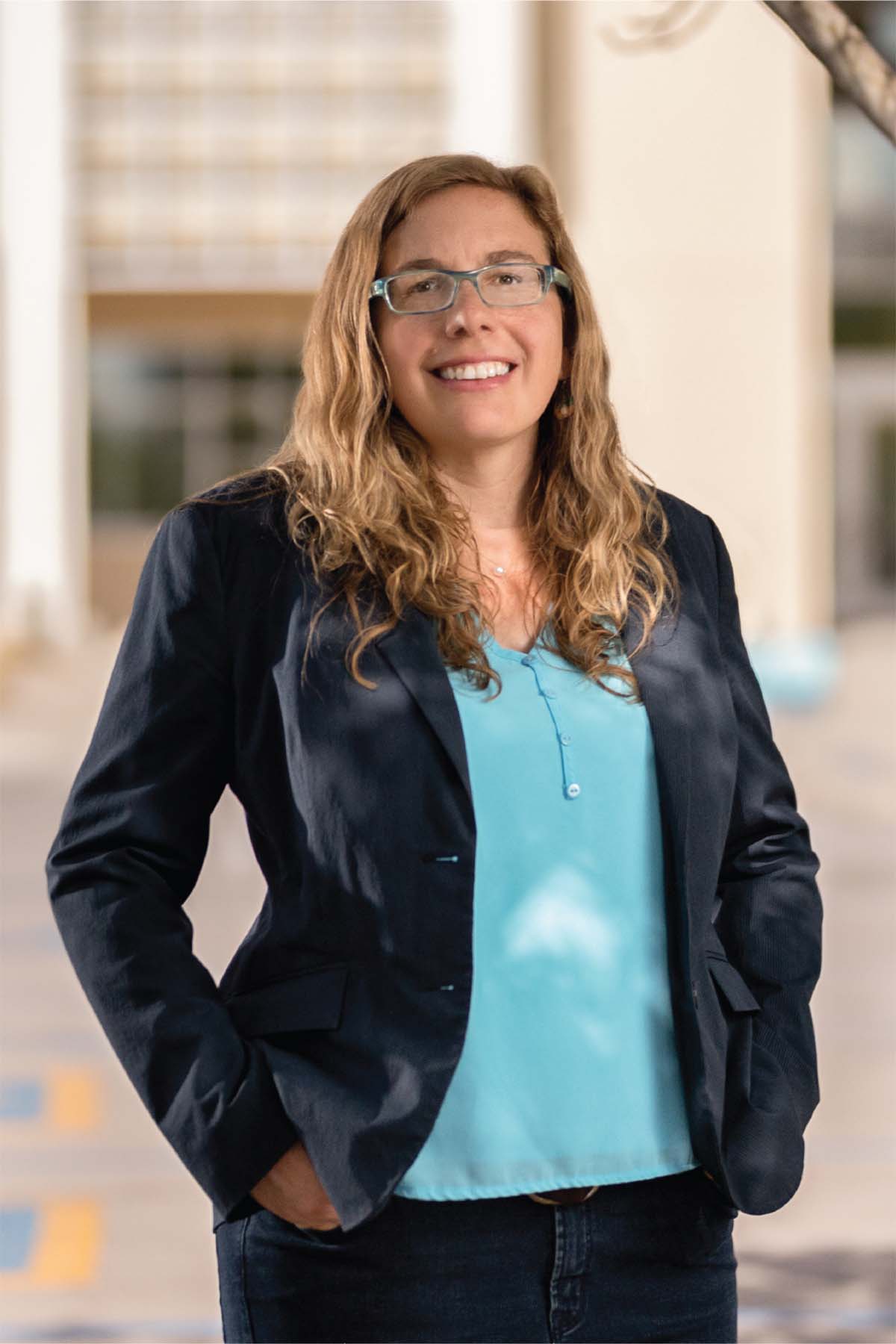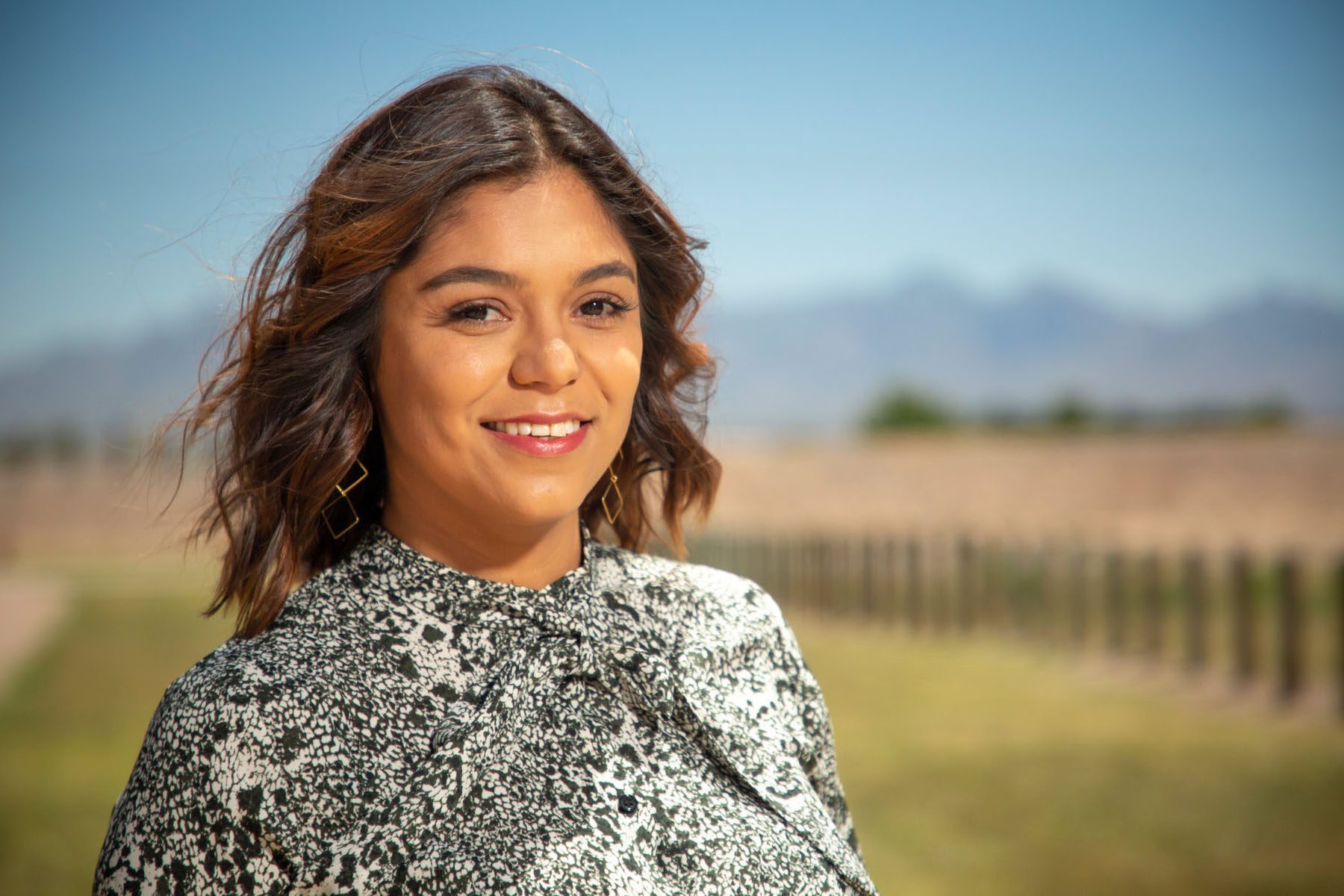The city of Las Cruces will soon have women representing all six of its city council district seats. It joins a short list of all-women or nearly all-women governing bodies.

Newly elected Las Cruces councilor, Becki Graham. (COURTESY OF BECKI GRAHAM)
At city hall in Las Cruces, New Mexico, a wall of photographs displays the faces of elected city council members. Come January, the photos will all be of women.
Becky Corran’s face will be new on the wall, as will that of Becki Graham. They’ll join Yvonne Flores, who won reelection in November, and three other women who were not up for election this year. The Las Cruces City Council, for the first time ever, will be all women.
Technically the chair of the council is the mayor, and opposite the wall of city council members is another wall of photographs revealing that only men have served as mayors in Las Cruces.
“It makes me think about how representation matters, and if there were one woman on that wall, what would it mean,” said Corran, who will be sworn in Monday along with the members starting new four-year terms. “That there will be all women on the wall on the other side — it’s going to be really exciting.”
Las Cruces, a city of roughly 100,000 people in the southern part of the state, has a long to-do list of policy issues around the pandemic, the economy and general equity. How an all-women city council might address them is yet to be determined. But the fact that it joins a short list of all-women or nearly all-women governing bodies is a sign of how underrepresented women remain at all levels of government.
“I think that I’m coming into it with this idea that, as cliche as it may sound, maybe this is going to be a space where leaders are more willing to listen to one another,” said Becki Graham, the other newly elected councilor. “To take the time to consider things outside of the traditional power hierarchy, if that makes sense.”
Councilor Johana Bencomo agreed that they will have the power to do things in new and distinct ways.
“I just think that our approach to some of the things that really matter to Las Cruces will be inherently different, and honestly, I think more compassionate,” she said.
The Las Cruces council seats are nonpartisan, but councilors lean Democrat. The new councilors will replace people from similar ideological backgrounds. Before the November election, women and people of color already made up the majority of the council.
Research on women-led governments shows that party affiliation instead of gender is a greater indicator of policy action. But on the local level, it’s more of a mixed bag.
Mirya Holman, an associate professor of political science at Tulane University who has written extensively about women in municipal government, said a “critical mass” of women’s representation on a council is among the key indicators for policy change that centers on what she described as “urban women’s issues” — children, education, affordable housing, social welfare and domestic violence. She said early women’s community activism can be traced back to these policy areas, and many of these issues are still intertwined with local government intervention. The presence of more women on a council can also be motivating to the public.
“You have the potential for members of the community to perceive the council as different, and thus be more willing to approach council members about their problems,” she said. “So there’s tons of ways where you might have the potential for some changes to occur.”
But Holman cautioned that existing power structures in local governments, which vary depending on the city or county, can impact what local officials are able to get done. She noted that cities tend to give preference to economic development issues, which can then affect other policy priorities.
Women hold 30.5 percent of municipal offices nationwide, including mayoral offices, city councils and other similar bodies, according to data released earlier this year that shows similar representation limitations in state and federal offices. It makes all-women or nearly all-women governing bodies — and the sexism they face — all the more noteworthy.

Becky Corran (COURTESY OF CTE BECKY CORRAN)
In 2015, after women won a majority on city council in Austin, Texas, officials at the time approved training for city staff on how to respond to a more gender-diverse council. The training warned city staff that women do not like math and ask a lot of questions. Women council members later held a news conference to call out the sexist training.
Holman said Austin’s training fiasco, which led to apologies from city officials, was flawed from the beginning because it implied that such training to address more women on a council was even needed.
“There’s never, ‘Oh, how do we deal with all of these men?’” she said. “Instead, it’s always like, ‘Oh, this strange set of women, we don’t know what to do with this.’”
The earliest known example of an all-women governing body in America was recorded in 1887 in the city of Syracuse, Kansas, when an all-woman city council was elected to serve with a man mayor. One year later, residents in the city of Oskaloosa, Kansas, elected an all-woman city council who served with a woman mayor.
In 1920, the city of Yoncalla on the western side of Oregon voted in an all-woman city council, including a woman leading it. The mayor-elect reportedly promised: “We intend to study conditions and do all in our power to give Yoncalla a good, efficient government. At the worst, we can’t do much worse than the men.”
A handful of other all-women governing bodies have popped up from time to time since then. One of the latest examples is in Asheville, North Carolina, where six women and a woman mayor have served on the city council since late 2020.
Esther Manheimer, the mayor of Asheville, told The 19th that it’s hard to definitively measure how the gender makeup of the council has impacted their work. The council this year approved a budget that included eight weeks of paid parental leave and six weeks of paid family leave for city employees, but Manheimer noted that North Carolina gives its city councils limited jurisdiction on policy decisions about health, education and child care.
Manheimer said while she’s not close to everyone serving on the council, some members share personal details about their lives in the course of their work. She thinks that brings them closer together, and in turn has an effect on their policymaking.
“When you have those closer relationships, it’s easier to talk to one another,” she said. “It’s easier to work through challenging situations and tough decisions.”
Organizers in New Mexico politics said that the state has been gradually investing in women candidates and that it has had a direct impact on representation on the local level. Women make up the state’s entire congressional delegation, and they have majority representation in the House chamber of the state legislature. Democratic Gov. Michelle Lujan Grisham is one of only nine women governors in the country.

Johana Bencomo (COURTESY OF JOHANA BENCOMO)
Jessica Velasquez, chairwoman of the Democratic Party of New Mexico, said local government, including city councils and county commissions, have a very immediate impact on people’s day-to-day lives and serve as a pipeline for higher office. She watched November election returns alongside her 12-year-old.
“Watching my daughter’s face light up when she heard that Las Cruces had elected an all-woman city council for the first time in history … the look of inspiration and happiness on her face said it all for me,” she said.
Las Cruces has used ranked-choice voting since the city council approved an ordinance in 2018. The system — which allows residents to pick multiple candidates by preference — has been credited with helping women and people of color candidates because it’s less likely to create false choices amongst diverse candidates. Preliminary research shows women and people of color candidates win in higher numbers under a ranked-choice voting system.
At least three women on the Las Cruces city council are alums of the New Mexico chapter of Emerge, a national organization that recruits Democratic women to run for office and has been attributed with pipeline candidates building in communities including Boston. Sondra Roeuny, executive director of Emerge New Mexico, said she doesn’t think these things happen by accident.
“The work that we do to help recruit, train and continue to support women and nonbinary individuals run for office — and when — really matters for what comes down the pipeline,” she said. “It matters for the policies. It matters for what gets discussed.”
Corran, the first out queer person to be elected to the council, said it was incredibly important that Emerge encouraged her to run for public office.
“I never really pictured myself as someone in politics. I think being a queer woman, being a woman, that meant a lot of barriers that I had constructed. Like, ‘Oh, people are going to look at me and see me and it will hurt,’ basically,” she said. “I think I had constructed a lot of those things in my mind.”
That fact that all-women governing bodies aren’t more common is a result of the realities of running for office, Holman said.
“Networks of power are self-reproducing, and generally exclude anybody that’s not a White man. That applies at the national level, that applies in state politics, and that applies at the local level,” she said. “It’s not that nobody can get into those networks of power — women frequently do, people of color do, women of color do — but we haven’t seen this sort of whole-scale transformation of what those networks of power might look like.”
Still, Bencomo is hopeful about what Las Cruces’ nearly all-women city council signifies. She said women, particularly women of color, have been key political organizers in the state, and she attributes it to more public support for issues like increasing the minimum wage.
“I really do feel like it’s been a lot of grassroots power-building that has allowed for people who never traditionally saw themselves in leadership positions to take ownership of it and represent their communities,” she said.